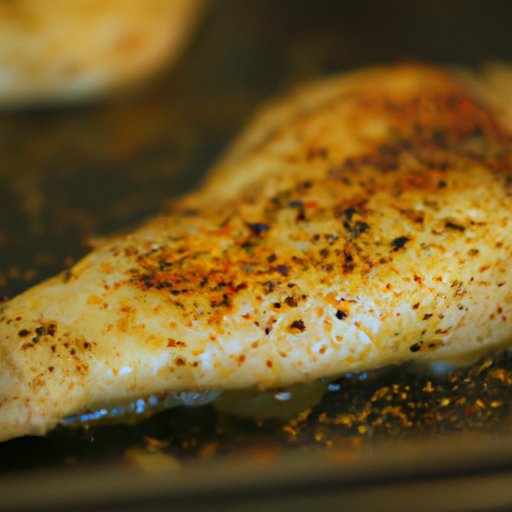Introduction
Baking chicken breast at 350 degrees may seem simple, but getting it just right can be a challenge. Overcooked, dry chicken is a common problem, but with the right information, you can achieve juicy, flavorful baked chicken every time.
It’s important to get the cook time right because undercooked chicken can be dangerous, while overcooked chicken can be tough and unappetizing. In this guide, we’ll cover everything you need to know about baking chicken breast at 350 degrees.
Understanding Chicken Breast
Before we dive into the baking process, it’s important to understand the basics of chicken breast. Bone-in chicken takes longer to cook than boneless chicken, and thicker cuts will take longer than thin ones.
It’s also crucial to properly thaw chicken before cooking. Letting it sit out on the counter to defrost can lead to food poisoning. Instead, thaw chicken in the fridge overnight, or under cold running water.
Prepping Your Chicken Breast for Baking
Once you have thawed your chicken, it’s time to prep it for baking. Depending on the quality of your chicken, you may need to trim any excess fat or remove the skin.
Seasoning your chicken before baking can also make a big difference. A simple salt and pepper rub is always a classic, but you can also experiment with different spices and herbs. For maximum flavor, marinate the chicken overnight.
Whatever you choose, be sure to pat the chicken dry before baking. This will help create a crispy, golden-brown skin.
Baking the Chicken Breast
The most important question when it comes to baking chicken breast is, of course, how long to bake it at 350 degrees. The answer depends on the weight and thickness of the chicken. For boneless chicken, a good rule of thumb is to bake for 20-25 minutes, while bone-in chicken may take closer to 45 minutes.
It’s also important to check the internal temperature of the chicken using a meat thermometer. Chicken is safe to eat when it reaches an internal temperature of 165 degrees Fahrenheit.
Finally, let the chicken rest for a few minutes after baking. This allows the juices to redistribute, creating a more flavorful and tender finished product.
Troubleshooting Common Issues
Despite your best efforts, sometimes problems can still arise when baking chicken breast. Dryness is a common issue, and can often be remedied by adding more seasoning or cooking for a shorter time.
Uneven cooking can be solved by using a meat mallet to pound the chicken to an even thickness. If some parts of the chicken are still raw while others are cooked through, cover the cooked parts with foil to prevent them from overcooking while the other parts catch up.
Advanced Techniques for Perfect Baked Chicken Breast
If you feel confident in your basic baked chicken breast skills, there are some advanced techniques you can try to take your chicken to the next level. Brining the chicken in a salty solution before baking can lead to juicier, more flavorful meat.
Broiling the chicken for a few minutes at the end of the baking process can also help achieve a crispy skin. However, be sure to watch the chicken carefully during broiling, as it can quickly go from crispy to burned if left unattended.
Conclusion
Baking chicken breast at 350 degrees doesn’t have to be intimidating. By properly understanding and prepping the chicken, baking for the appropriate amount of time, and troubleshooting common issues, you can create a delicious, juicy meal every time.
Now that you have all the information you need, it’s time to get baking! Try out some of these tips and tricks, and let us know how it goes.
